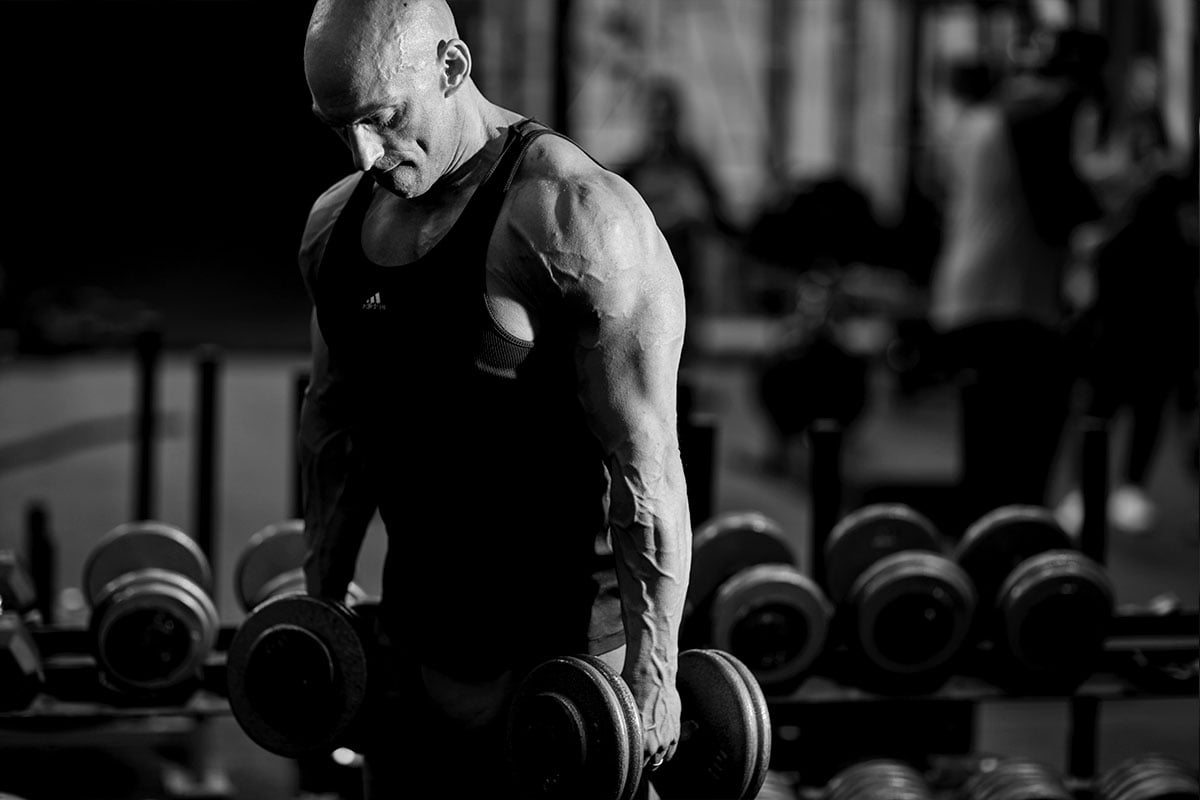Knowledge
Opinion : Intervals Are Overrated
Articles, Fat loss, Training

Opinion : Intervals Are Overrated
Steady-state cardio is evil, will waste away your muscles by jacking up cortisol, doesn’t burn much fat and is boring AF. High-Intensity Intervals will get you a lot leaner, will not raise cortisol and are awesome. This seems to be the common belief in the strength training world.
I believed it myself for years.
And I was dead wrong!
Simply put, you gotta stop putting HIIT on a pedestal.
Here is the lowdown:
1.The main claimed benefit of HIIT is related to EPOC, which comes with an increase in caloric expenditure even after the session has concluded. “Your body remains a fat-burning machine for hours” is what some people will claim.
No, it doesn’t.
In the best-case scenario, EPOC will account for 6-15% of the energy burned during the session itself. So, if your workout “burned” 400 calories, you get an extra 24-60 calories after your workout. Considering that a pound of fat is 3600 calories, we can’t really say that it is significant. And that is the best-case scenario. The fact is that few people actually perform their intervals with enough intensity to get that much of a benefit
2. Let’s think about why your body even keeps burning more fuel after the workout and see if it’s a good thing or not. What do you mean? Burning more energy will always be a good thing, right? Maybe not…
Experts often point out that you keep burning more energy because your heart rate stays elevated. That’s not the true reason, that is merely a symptom. Your heart rate stays elevated because your nervous system stays amped up after the workout.
Specifically, the adrenal receptors (adrenaline) stay activated, which keeps the heart rate high and also boosts energy expenditure. Cool right? Not so fast…
Do you really want to stay activated after the workout is over? Staying activated comes at a cost: you risk what is often called CNS fatigue (dopamine depletion or adrenergic receptor desensitization). When that happens, your body has to produce more cortisol throughout the day and chronic cortisol elevation could lead to slower fat loss in the long run by decreasing T4 to T3 conversion, decreasing metabolic rate/energy expenditure.
3. When doing intervals, a greater proportion of the energy used during the workout comes from glycogen, not fat. “Experts” will claim that this doesn’t matter because if you are in a caloric deficit, the net outcome of your day will be fat loss. So even if most of the fuel comes from glycogen, if it puts you in a deficit, you will likely lose fat. That sounds logic for sure, but only with the ideal “theoretical model”. And the average human being is not the ideal model.
The average sedentary and overstressed human is a bad “fat mobilizer”, good at storing fat and more efficient at using glucose for fuel. What we want is to improve the capacity to mobilize and use fat for fuel. The more you train the body to use glycogen for fuel, the more efficient that system becomes and the less stored fat you will use as fuel since that system becomes less efficient by comparison.
That’s why I believe that steady-state cardio is important; not because it “burns” calories, but because it can improve the efficacy of fat mobilization via the upregulation of several enzymes, as well as optimize the fat oxidation capacity of the mitochondria. In simpler terms, you program your body to be more efficient at mobilizing and burning fat. When that happens, you will rely less on glycogen for fuel and lose fat more easily.
4. It’s funny that HIIT addicts claim that steady-state cardio is bad because it will jack your cortisol up. Because in reality, HIIT will increase cortisol more than a regular steady state session. The belief that steady-state cardio increases cortisol is based on work on endurance athletes, who have shown elevated cortisol, but we are talking about 2+ hour sessions at a fairly fast pace. Not the same thing at all as doing 30-40 minutes at a moderate pace in the gym. The two main things that increase cortisol during a training session are:
– The need to mobilize stored energy (glycogen, fat, amino acids)
– Activation of the nervous system, placing it in sympathetic mode
HIIT proponents are quick to point out that HIIT “burns” more energy than steady-state cardio. Fine, but in that case don’t say that steady-state produces more cortisol! If you burn more energy, you need to mobilize more and thus you will release more cortisol.
As for CNS activation, the more intense the work, the more you activate the CNS. Sprinting or doing the fast portion of the intervals is more intense than steady-state cardio. Which means that it will increase adrenaline and cortisol more.
Conclusion
I’m not saying that HIIT is a bad idea, quite the contrary. But it is not the be-all-end-all of fat loss. And should only be used …
- When an individual is efficient at mobilizing and burning fat for fuel
- When an individual has a good foundation of cardiovascular capacity, otherwise they cannot even do intervals at the required level of intensity
- Once or twice per week. When they are done at the intensity required they are very stressful on the body.
The main benefits of HIIT are an improvement in insulin sensitivity and an increase in growth hormone production which can help with fat mobilization and developing the functional capacities of the mitochondria. These are beneficial and do justify the use of HIIT in your training, but only when your body is ready for it and at a moderate dosage/frequency.
HIIT and steady-state cardio both serve a purpose, they are not mutually exclusive and are in fact complementary.
-CT